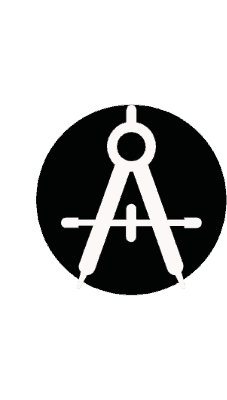Congratulations! If you have followed along with the previous five articles and taken the actionable steps to grow a business, you are now officially a professional landscape designer! Now you might ask, what’s next?
In this article, I will put the finishing touches on this business series and provide you some concluding words of advice I have found to be helpful in my own career – not only as a landscape designer, but also as a professor, father, and husband. Although most of this article will be focused on concepts for developing work ethic for your business, they can be equally helpful in all aspects of your life.
“The heights by great men reached and kept were not attained in sudden flight, but they, while their companions slept, were tolling upward in the night.” -” Henry Wadsworth Longfellow
If you were to ask any successful person what the most important aspect of being successful is, you would most likely receive the answer “hard work” a majority of the time. Nothing that is worth achieving for your business will come easy. You must dedicate personal time, resources, and effort to see your landscape design business succeed. There will be times in which you believe it may not be worth it – and that is completely understandable – but it is within those moments you need to buckle down and push through with extra effort.
However, you might say to me – a lot of people I know work hard, so what sets certain people apart from other? Well, working hard is only part of the equation, the second part is having a strategy, or better yet a routine.
A routine is an important aspect of business management. Not only will it provide you with a set list of tasks you need to complete, but it will also allow you to develop good habits for the future.
Think of it this way – how many times have you thought of working out, either lifting weights or running, but you didn’t know how much to do or when to do it. At that point, you most likely looked up or purchased a workout program that laid out exactly what exercises to do and how often to them.
These exercise routines are invaluable to beginners because they clearly set a roadmap to being successful in fitness. You need to develop your own roadmap, or routine, for your own business and write it down. The routine doesn’t have to be very complicated, but it should be thorough.
How often will you market for new clients? When will you do invoicing? What days will you schedule team meetings?
Take the time in the beginning of your business journey to write down a daily, weekly, and monthly routine. This will help ensure you are setting yourself up for the best chance of success moving forward.
To establish a good routine you should have the following:
- A clear understanding of what is doable within the time you have to work on your business
- An itemized list of tasks that need to be accomplished, whether large projects or small easy jobs
- Information on the skills of your employees and how each can contribute to your routine
- Evaluation of potential roadblocks that can prohibit you from achieving the goals of your routine. (These could be personal or business related)
After having identified those five items, sit down at your computer or simply with a pad and pencil and write down a basic weekly routine. Try to stick to it and adjust if necessary. Within one month, you should have established an effective and doable routine to accomplish all the tasks associated with your business for the month.
“Unfortunately, there seems to be far more opportunity out there than ability. We should remember that good fortune often happens when opportunity meets preparation.” – Thomas Edison
Starting a landscape design business is a marathon, not a sprint. You will need to tailor your expectations to the realistic possibilities that you may not succeed in producing an enormous income from your design practice within the first few years. This realization often makes the less confident business owners quit and dissolve their practice, or worse, continue with poor results due to poor habits that developed from not taking their business seriously – be careful not to fall into this trap.
From the very beginning of your business, treat it as if it were a Fortune 500 company. Develop good habits and keep working hard to grow the business. This preparation will springboard your company when opportunity comes knocking.
So what does this “preparation” look like? Here are some quick items you should have prepared for your business that may not be needed within the first few years.
- Create a Spreadsheet of Specialty Contractors (masonry, irrigation, wall installation, etc.). You may not need or utilize this contact information at the beginning of your business; however, if a potential clients asks if you can help with a project outside your specialty area, it is helpful to have an existing directory to pull from for specific installation items.
- Develop an Executive Summary for Your Company. An executive summary is a key document for any large publicly-held company, but it can also be useful for your small business. The summary should be a 1000-1500 word document that outlines the mission of your business, the future income prospects, and the specific reasons why you feel the business will succeed. Having this document readily available will assist should you need to look for future partnerships or investments from outside sources.
- Optimize Your Website. Nothing can turn away a future client like a poor website. A well-designed and well-developed website can also help in adding a professional face to your small business
Most importantly, set goals for yourself. Not only set goals, but write them down and post them around your studio. Make sure that everyone on your team knows the companies goals and where the business is headed. This will keep everyone thinking forwards rather than backwards.
Take the time to work hard. Develop good habits and keep learning about the industry. By doing this, you will have much success and profitability in your endeavors.
To learn more about growing your business and landscape design, be sure to look at our Business and Design sections for recent articles on topics that will help your company grow.


